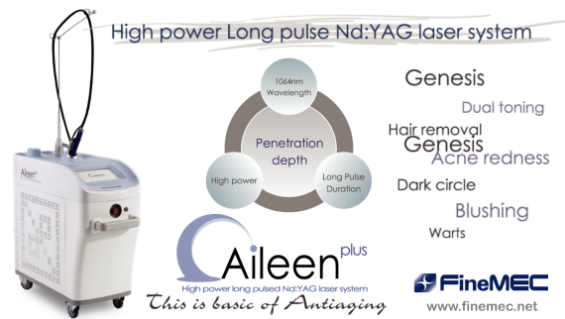Acellular dermal matrix, developed in the form of sheet, has been used for various regeneration and reconstruction purposes, such as for burn, injury and ulcer, abdominal wall reconstruction, breasts reconstruction, vocal cord paralysis surgery and interdental papilla graft. Acellular dermal matrix is also called a ‘dermal regeneration template’ since it maintains 3-dimentional structure of the dermis, playing the role as a scaffold of various cells and stem cells.
With the development of emergency medicine since the 1970s, the survival rate of patients with extensive burns has increased, leading to the development of artificial skins for such patients. The shortage of dermis was the cause of severe scar and contracture, giving rise to the necessity of regenerating important structural and physical properties of the dermis and, as a result, the development of dermal regeneration template (acellular dermal matrix). The coverage of dermal regeneration template spans from the treatment of extensive burns to improvement of burn scars, correction of contracture, and the treatments of exposed bones, tendons, joints, and acute or chronic wounds; the indication is still in the progress of expanding. In other words, acellular dermal matrix has become an important tool and element for regenerative surgery.
[Advertisement] ▶ Aileen plus(Long pulsed Nd:YAG Laser) – Manufacturer: FineMEC(www.finemec.net)
The skin is roughly composed of the epidermal tissues in the body surface and the dermis below. The main roles of the epidermis are to prevent water loss inside the body and to protect the body from foreign hazardous materials, such as bacteria and ultraviolet. The outermost multiple layers of stratum corneum, cells producing pigments and blocking ultraviolet, Langerhans cells eliciting immune function, hair cells that forms the hair, and skin appendages including sweat glands are all located in the epidermis. Basal cells, located at the bottom of the epidermis, do not have any special protective function but is the mother of various types of cells that have protective function. Small wound in the skin can heal because these basal cells make new cells constantly. The dermis under the epidermis is composed of fibrotic proteins (collagen) and fibroblasts tangled in places like threads. Since capillaries can reach up to the dermis, nutrition and various growth factors are supplied to the epidermal cells by diffusion.
Stem cells are cells that have the potential to differentiate repeatedly, with the abilities to replicate themselves and to differentiate to various tissues. Stem cells are found abundantly in an embryo after a few days of fertilization. Stem cells can be obtained, therefore, from surplus embryos produced for fertility treatment or from embryos replication without fertilization. Human muscle cells or skin cells may be obtained from these stem cells under an appropriate condition. Because of the self-replicating ability, stem cells can be mass cultured and differentiated to skin cells to obtain large amount of artificial skin.
Early artificial skin studies mainly focused on attaching temporary protective film, such as silicone or dressing, or transplanting autologous skin graft, to provide a temporary protection until new skin grows. Recent studies focus on the technology of replacing human tissues, damaged by disease, injury or aging, with cultured tissue cells to minimize rejection reaction by means of tissue engineering.
An adult patient with severe skin damage generally requires 2,000-4,000 cm² of skin graft; especially those with extensive burns require bioartificial skin proliferated tens or hundreds of times from small skin tissue. Artificial skin is a material that regenerates damaged skin, and may be divided to wound dressing, artificial dermis (acellular dermal matrix), bioartificial skin (cultured skin) depending on the roles.
1) Wound Dressing
Once a wound occurs, it is important to recover the skin structure similar to the original state. A wound, if left open for a long period of time, may accompany primary complications, such as infection, and may cause pain during the treatment period and discomfort in daily life; therefore, the wound should be closed in the early phase. In the past, it was common to attempt passive treatments, such as applying disinfectant and covering with gauze until the wound is closed. Attaching a temporary protection, such as silicone or dressing, or transplanting autologous skin graft until new skin grows, have been the most common method of temporary wound protection for burns or traumas from the early days of artificial skin study until now. Wound dressing is useful for preventing water leak from inside the body, absorbing exudate (fluid that filters from the blood vessels into lesions, in the presence of inflammation), and preventing bacterial invasion from the outside and infection. Other than gels, dressings are made of porous membrane, using polyurethane membrane or chitin, or freeze-dried pig leather.
2) Artificial Dermis (Acellular Dermal Matrix)
Artificial skin is used for wounds with skin defect due to extensive burns or surgery, and is made of synthetic or natural polymers. The upper layer is made of silicone to prevent the loss of body fluid by vaporization, and the lower layer is made of collagen, to induce angiogenesis and regeneration of connective tissues, actively helping regeneration to the original skin tissues and providing an easy passage for body cells after being disintegrated and absorbed in the body. It is hard to expect natural healing process by conservative treatment when a skin defect is very wide due to deep burns or skin cancer resection. Such cases are commonly reconstructed by skin graft or flap operation; recently, various types of dermis are available for transplantation, allowing much easier and simple covering and both functionally and aesthetically superior results. Transplantation with artificially synthesized dermal tissue may prevent severe scar and scar contracture that may happen after skin restoration to some extent. Although there might be some difference between products, artificial dermis is composed of collagens, glycoproteins and elastic fibers, which are constituents of the dermis, preventing scar formation, inducing dermal synthesis, and protecting from scar contracture. Artificial dermis is highly porous and is structured for provide a high penetration power. Structural determinants of regeneration ability in each artificial dermis are chemical constituents, size and rate of stoma, and the degeneration rate of the artificial dermis. Integra (Lifesciences, Plainsboro, NJ, USA), Pelnac (Gunze, Tokyo, Japan), Terudermis (Olympus Terumo, Tokyo, Japan), and Matriderm (Skin Health, Billerbeck, Germany) are the commonly used products in Korea.
Allogenic dermis can be classified separately from artificial dermis. Allogenic dermis is an acellular dermal matrix made from human skin by removing immunoreactive epidermal and dermal cells and then glycerol-preserved or cryopreserved, with basic 3-dimensional structure preserved in the state most similar to the actual skin. Alloderm (LifeCell, Branchburg, NJ, USA), developed in the US, is currently being imported in the Korea market. Surederm (Hans Biomed, Daejeon, Korea) and CGCryoDerm (CG Bio, Seongnam, Korea), developed in Korea, is also widely used. Dermal substitutes had been commonly used for the treatment of severe burns, but are currently being used for wound dressing and implantation in various fields, including burn, reconstructive plastic surgery, abdominal wall reconstruction and breast reconstruction.
For your information, autogenous dermal graft is an aesthetically superior skin grafting method to overcome disadvantages of conventional skin grafting. This method grafts the dermal layer only and induces epithelialization from the surrounding tissues of the recipient site to minimize hypertrophic scar in the donor site and color difference in the recipient site. The melanocytes contained in the epithelium are distributed throughout the body with different density and activity per each area, affecting the skin color. Skin graft for a wound may have different color from the surrounding tissues, therefore. Such color difference may be reduced by grafting the dermal layer only and then letting the epithelium regenerate secondarily from the epithelium of the surrounding tissues. The donor site scar can be also minimized in this manner, because the donor site can be covered again by the remaining epithelium in place. However, it takes a longer time until the epithelium is regenerated if the skin defect is large.
3) Bioartificial Skin (Cultured Skin)
Bioartificial skin may be used for extensive burns, skin ulcer due to diabetes mellitus, or skin damages. For this method, collected and cultured skin cells are attached to artificial skin to form tissues. Bioartificial skin rarely causes rejection reaction and the skin size can be modified as much as needed, even for severe burns. Because it is made from biocompatible materials according to the desired structure and function by 3-dimentional skin cell culture, bioartificial skin is a living artificial skin, almost similar to the actual skin. Among the representative products is Holoderm (TEGO Science), a cultured epidermal autograft, obtained by culturing small amount of skin (1-3 cm²) collected from the patient.
As discussed earlier, artificial dermis (acellular dermal matrix) is made by removing all cellular components, except for tissue function and structure, from collected cells, combining collagen by enzyme to strengthen the structure, and sterilizing the tissue to reduce the risk of infection before being distributed. Extracellular matrix is one of the main components of the dermis and plays an important role in the process of tissue recovery. The main constituents are hyaluronic acid, proteoglycan and collagen, and artificial dermis can replace normal extracellular matrix. Artificial dermis is normally processed from human or animal but may also be made from synthetic materials. In conclusion, artificial dermis was developed for the treatment of extensive burns and has been used as one of important strategies for reducing donor site morbidity by simpler skin graft, not flap operation, to treat and recover exacerbated inflammation of a chronic wound, such as diabetic foot, or wounds with exposed ligaments or bones. The indications for artificial dermis has rapidly expanded to be used as a scaffold for implants in breast reconstruction surgeries, for shaping in plastic surgeries, or for increasing volume in reconstruction surgeries for congenital malformations, trauma or cancer.
- To be continued -
▶ Previous Artlcle : #2. Elements of Tissue Regeneration
▶ Next Artlcle : #4. Stem Cell: Human Embryonic Stem Cell





















